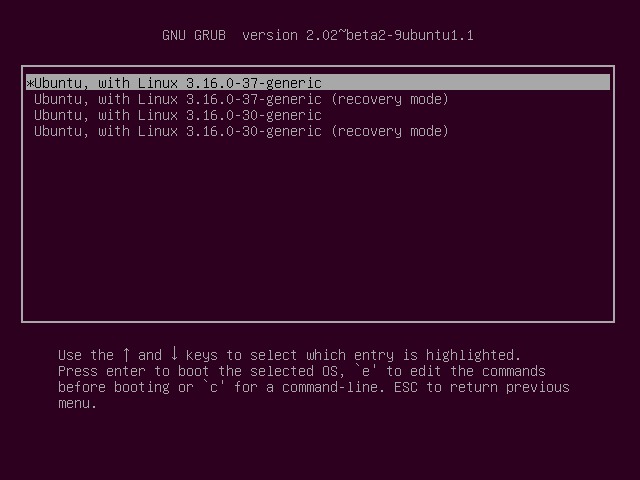
How to change root password in Ubuntu in 2024
📋 Table of Contents
Introduction
Security is paramount, and one critical aspect is the management of the root password. Mastering the art of changing the root password is essential for maintaining a secure and robust system. In this comprehensive guide, we will walk you through the process step by step, ensuring you have a thorough understanding of each action.
Understanding the Root Account
The root account holds unparalleled power within the Ubuntu system, akin to the administrator account in Windows. It is crucial to comprehend the significance of safeguarding this account and regularly updating its password to fortify the overall security of your system.
Assessing the Current Root Password
Before delving into the process of changing the root password, it’s imperative to assess the current status. Open a terminal and use the following command:
bashCopy code
sudo passwd --status root
This command will display the current status of the root password, including whether it is locked or not. Understanding the existing state is vital for a seamless transition to a new password.
Introduction
In the realm of Ubuntu, security is paramount, and one critical aspect is the management of the root password. Mastering the art of changing the root password is essential for maintaining a secure and robust system. In this comprehensive guide, we will walk you through the process step by step, ensuring you have a thorough understanding of each action.
Understanding the Root Account
The root account holds unparalleled power within the Ubuntu system, akin to the administrator account in Windows. It is crucial to comprehend the significance of safeguarding this account and regularly updating its password to fortify the overall security of your system.
Assessing the Current Root Password
Before delving into the process of changing the root password, it’s imperative to assess the current status. Open a terminal and use the following command:
bashCopy code
sudo passwd --status root
This command will display the current status of the root password, including whether it is locked or not. Understanding the existing state is vital for a seamless transition to a new password.
How to change root password in Ubuntu
Step 1: Access the Root Account
Initiate the process by accessing the root account. Execute the following command in the terminal:
bashCopy code
sudo -i
This grants you superuser privileges, allowing you to make changes to the root account.
Step 2: Change the Password
Now, change the root password using the following command:
bashCopy code
passwd
Enter the new password when prompted, ensuring it adheres to robust security standards. Ubuntu’s password policy typically requires a combination of uppercase and lowercase letters, numbers, and special characters.
Step 3: Verify the Changes
To confirm the successful alteration of the root password, execute the following command:
bashCopy code
sudo passwd --status root
Verify that the password status now reflects the changes made, confirming a secure and updated root password.
Best Practices for Root Password Management
Ensuring the utmost security for your Ubuntu system goes beyond the act of changing the root password. Implementing the following best practices will fortify your system against potential security threats:
Regular Password Updates
Make it a routine to update the root password at regular intervals. This proactive measure ensures that even if there is a security breach, the impact is minimized.
Strong Password Policies
Adhere to stringent password policies when setting or updating the root password. Utilize a combination of alphanumeric characters, symbols, and a significant length to create a robust and resilient password.
Limited Root Access
Restrict access to the root account to only essential users. This minimizes the chances of unauthorized access and enhances overall system security.
Conclusion
Mastering the process of changing the root password in Ubuntu is a fundamental skill for any system administrator or Ubuntu enthusiast. By following these step-by-step instructions and implementing best practices for password management, you contribute significantly to the security and integrity of your Ubuntu system.
Step 1: Access the Root Account
Initiate the process by accessing the root account. Execute the following command in the terminal:
bashCopy code
sudo -i
This grants you superuser privileges, allowing you to make changes to the root account.
Step 2: Change the Password
Now, change the root password using the following command:
bashCopy code
passwd
Enter the new password when prompted, ensuring it adheres to robust security standards. Ubuntu’s password policy typically requires a combination of uppercase and lowercase letters, numbers, and special characters.
Step 3: Verify the Changes
To confirm the successful alteration of the root password, execute the following command:
bashCopy code
sudo passwd --status root
Verify that the password status now reflects the changes made, confirming a secure and updated root password.
Best Practices for Root Password Management
Ensuring the utmost security for your Ubuntu system goes beyond the act of changing the root password. Implementing the following best practices will fortify your system against potential security threats:
Regular Password Updates
Make it a routine to update the root password at regular intervals. This proactive measure ensures that even if there is a security breach, the impact is minimized.
Strong Password Policies
Adhere to stringent password policies when setting or updating the root password. Utilize a combination of alphanumeric characters, symbols, and a significant length to create a robust and resilient password.
Limited Root Access
Restrict access to the root account to only essential users. This minimizes the chances of unauthorized access and enhances overall system security.
Conclusion
Mastering the process of changing the root password in Ubuntu is a fundamental skill for any system administrator or Ubuntu enthusiast. By following these step-by-step instructions and implementing best practices for password management, you contribute significantly to the security and integrity of your Ubuntu system.